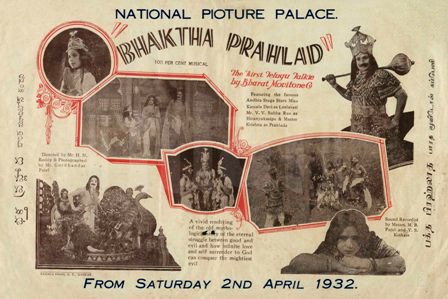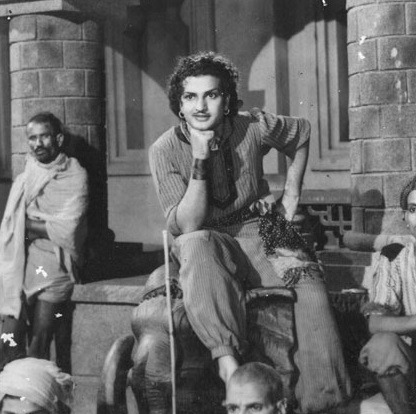Tollywood, the vibrant epicenter of Telugu cinema, has a rich and colorful history that is as dynamic as the films it produces. Nestled in the heart of Hyderabad, this bustling film industry has not only shaped the cultural landscape of Andhra Pradesh and Telangana but has also left an indelible mark on the global cinematic map. Let’s delve into the journey of Tollywood, exploring how it blossomed from its humble beginnings into a powerhouse of storytelling and entertainment.
What is Tollywood?
Before we get into the history of Tollywood cinema, we must first discuss what Tollywood actually is. Tollywood, a term cleverly coined by blending “Telugu” and “Hollywood,” is the colloquial name for the Telugu-language film industry based primarily in Hyderabad, India. It stands as one of the most prominent film industries in India, contributing significantly to the country’s rich cinematic heritage. Unlike Bollywood, which is often synonymous with Indian cinema globally, Tollywood specifically caters to the Telugu-speaking audience, the third-largest linguistic group in India.
The industry is known for its diverse genres, ranging from drama, action, and romance to mythological and folk narratives, often interwoven with dance and music that are deeply rooted in the region’s culture. Tollywood has a unique flavor that sets it apart: it’s not just about entertainment but also about preserving and celebrating the linguistic and cultural identity of the Telugu-speaking people.
The Beginnings of Tollywood
The origins of Tollywood trace back to the early 20th century, marking a journey of humble beginnings and visionary aspirations. It was a time when the Indian film industry was in its early stages, experimenting with new forms of storytelling. In 1912, the first Telugu play “Bhakta Prahlada” was adapted into a film, but it was not until 1933 that the first Telugu talkie, “Sati Savitri,” was released, signaling a new era in regional cinema.
This period saw pioneering filmmakers and artists laying the groundwork for an industry that would later flourish beyond their wildest dreams. Filmmakers like H.M. Reddy, who directed “Bhakta Prahlada,” were instrumental in shaping the early Telugu film industry. These early films were primarily mythological and devotional stories, resonating deeply with the audience’s cultural and religious sentiments.
In the 1930s and 1940s, the industry began to expand, with studios in Madras (now Chennai) becoming the hub for Telugu film production. This era also witnessed the rise of prominent actors who would become legends, shaping the future of Telugu cinema. The industry’s growth was momentarily hindered by World War II, but it bounced back with renewed vigor post-war.
The golden era of the 1950s and 1960s saw Tollywood come into its own, producing films that not only entertained but also addressed social issues, a trend that was picking up across Indian cinema. It was during this time that the industry fully embraced its identity, creating a distinct cinematic language that resonated with its audience.
Tollywood After the Golden Age
As the 1960s ended, Tollywood embarked on a new journey, marked by significant changes and innovations that would redefine its identity and appeal. The 1970s and 1980s were transformative decades for the Telugu film industry, witnessing a shift from traditional mythological and social themes to more diverse genres, including action, romance, and family dramas. This period saw the emergence of new stars, directors, and storytellers who brought fresh perspectives and narratives to Tollywood.
The industry during this era was characterized by the rise of iconic actors like N.T. Rama Rao and Akkineni Nageswara Rao transitioned from playing mythological roles to more contemporary characters, reflecting the changing tastes of the audience. Filmmakers like K. Balachander and Bapu introduced a new wave of cinema, focusing on realistic and socially relevant themes, a departure from the larger-than-life stories of the past.
Technological advancements played a crucial role in Tollywood’s growth during these decades. The introduction of color films in the late 1960s, followed by advancements in sound and filming techniques, elevated the visual and auditory experience of Telugu cinema. The industry also began experimenting with different storytelling methods, incorporating elements of folk theater and classical dance, further enriching its cinematic tapestry.
Tollywood in the 1990s and Beyond
The 1990s marked a significant turning point for Tollywood, a period where it began to redefine itself with a blend of tradition and modernity. This era saw a departure from conventional storytelling, with filmmakers and actors exploring more contemporary themes and styles. The industry began to cater to a younger, more global audience while still maintaining its cultural roots.
During the 1990s, Tollywood witnessed the rise of new stars like Chiranjeevi, Nagarjuna, and Venkatesh, who brought a blend of charisma and acting prowess to the silver screen. They were instrumental in popularizing dance and action sequences, becoming trendsetters in Telugu cinema. This period also saw the emergence of female actors who played more substantial roles, breaking the mold of traditional character portrayals.
The 2000s were characterized by technological advancements and increased production values. Tollywood began embracing digital filming, sophisticated visual effects, and high-quality sound engineering, elevating the cinematic experience to international standards. Directors like S.S. Rajamouli and Trivikram Srinivas brought in fresh narratives, combining technical excellence with storytelling, resulting in blockbuster hits that received global acclaim.
The industry’s reach expanded dramatically, with Tollywood films finding audiences across the globe. The 2010s saw Telugu cinema breaking language barriers, with dubbed and subtitled versions gaining popularity in non-Telugu-speaking regions and countries. Films like “Baahubali” and “Arjun Reddy” became international phenomena, showcasing the industry’s ability to produce content that resonates with a global audience.
In recent years, Tollywood has continued to evolve, embracing new trends and technologies. The rise of digital streaming platforms has opened up new avenues for filmmakers to tell diverse stories, reaching a broader audience than ever before. The industry has also become more inclusive, with an increasing number of women taking on key roles in production and direction.
From the 1990s to the present day, Tollywood’s journey has been one of constant innovation and adaptation. It has successfully blended traditional storytelling with modern cinematic techniques, establishing itself as a major player in the global entertainment industry. This era reflects Tollywood’s resilience and its ability to reinvent itself, continually captivating audiences both in India and around the world.
Conclusion
Today, Tollywood stands as a powerhouse of Indian cinema, known for its high production values, innovative storytelling, and a talent pool that has gained international recognition. The journey from the post-1960s to the present day highlights Tollywood’s adaptability and resilience, continuously evolving to meet the changing demands of its audience while retaining its unique cultural essence. Having journeyed through Tollywood’s impressive history, you might be curious about specific genres. Discover the key ingredients of humor in What Are the Hallmarks of a Great Telugu Comedy Film?, where we break down the characteristics that define this popular and entertaining genre within Tollywood.


